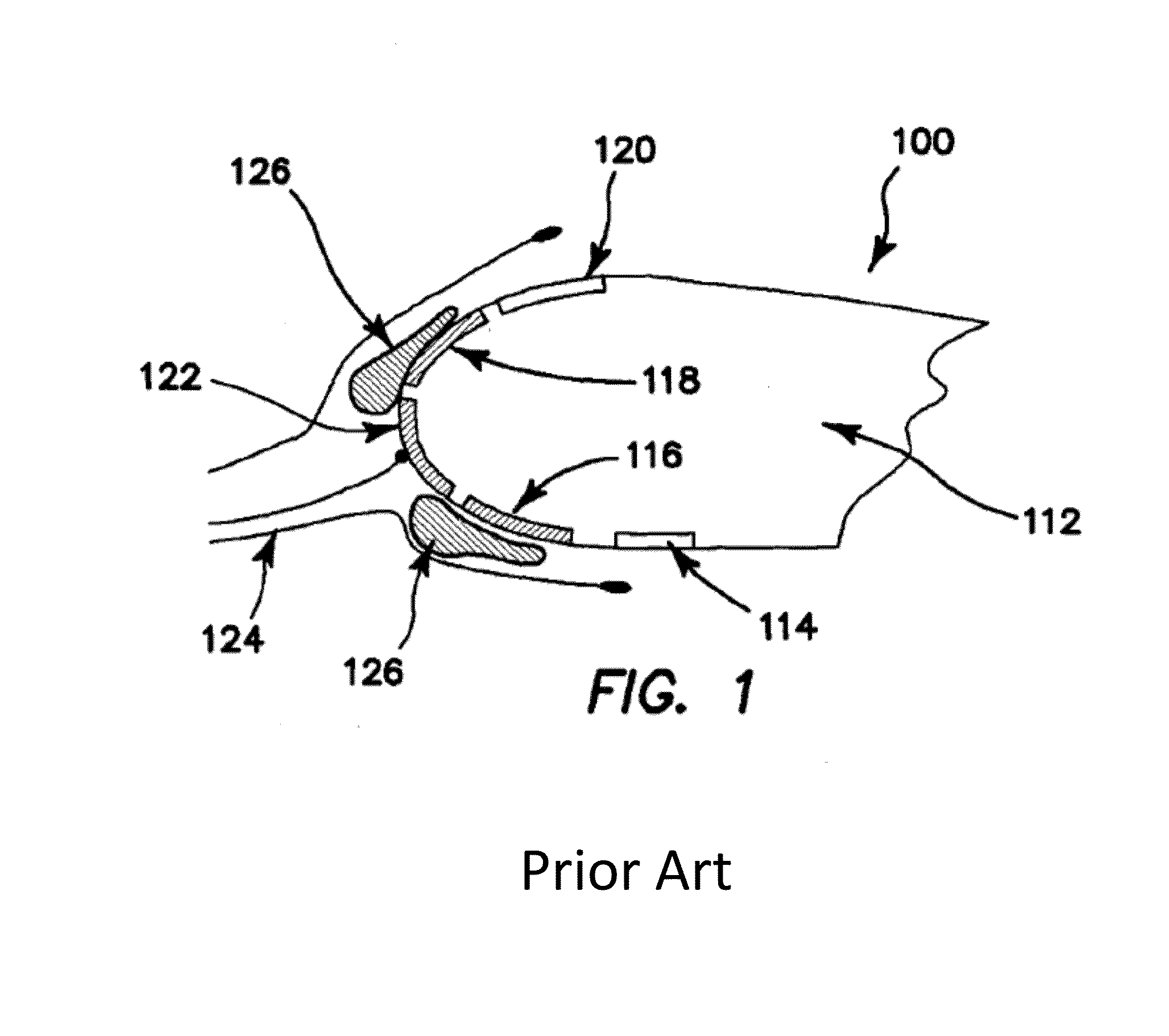Uniform Heat Distribution in Resistive Heaters For Anti-Icing and De-Icing
a resistive heater and heat distribution technology, applied in the direction of ohmic resistance heating, heating element shapes, electrical devices, etc., can solve the problems of changing the aerodynamic performance of the aircraft, posing potential problems to aircraft, and altering flight capabilities
- Summary
- Abstract
- Description
- Claims
- Application Information
AI Technical Summary
Benefits of technology
Problems solved by technology
Method used
Image
Examples
examples 1 to 8
Heating Performance of Film Heaters on Steel
[0074]Steel panels that were 5 inch long and 3 inch wide were primed with Deft 44-GN-072, MIL-PRF-85582D low density epoxy primer, to 9-10 mil wet thickness and cured according to manufacturer's instructions. These panels were used as substrates for heater fabrication. Alternatively, plastic substrates that were 5 mil thick, 3.75 inch long and 2.75 inch wider were glued to the primed steel. All substrates were scuffed, solvent wiped, and Corona treated prior to lead attachment. One of two types of leads was attached to the substrate—either Cu foil (0.005 inch thick and 0.2 in wide) or Cu braid that had been pressed to 0.005 in thick and 0.2 in wide.
[0075]The leads were adhered to the substrate as follows. In all cases, two roughly 2.5 inch to 3 inch long leads were placed in parallel, spaced 2 inch apart. They were attached with adhesive, as described below. Results are shown in Table 1.
[0076]The adhesive was mixed and cured according to t...
examples 13 to 16
Heating Performance of Heaters on Carbon Fiber Airfoil
[0082]Heaters were prepared according to previous examples 1, 3, and 5 with the exception that the base substrate was a primed carbon fiber composite airfoil shape. The samples were placed in a benchtop wind tunnel capable of operating at windspeed of 91 mph that was in a controlled temperature and humidity chamber. As shown by comparing 13 and 15 with 14 and 20 (Table 3), the use of a hybrid interface decreased the contact resistance and improved the thermal uniformity. The power density that could be operated before overheating and failing was 22 W / in2 at 0 to 10° F. and 91 mph, as opposed to 16 W / in2 and 12 W / in2 for the comparative example.
TABLE 3Description of Film Heaters on Primed CarbonFiber Airfoil, Tested in Benchtop Wind TunnelPowerContactDensity atResis-FailureExampleSubstrateLead Descriptiontance(W / in2)13Ultem attachedCu foil attached100% 16 at 0° F.to primedwith Devcon Epoxyand 91 mphcarbon fiberPlus having wideairf...
examples 17 to 20
Durability of Heaters on Carbon Fiber
[0083]Example 17. In this example a hybrid Cu—Ag-CNT interface is created that has a smooth transition
[0084]The configuration shown in FIG. 2 was prepared. A 4 inch by 4 inch square carbon fiber panel was primed with Deft 44-GN-072, MIL-PRF-85582D low density epoxy primer, to 9-10 mil wet thickness. The primer was cured at room temperature for at least 24 h. The surface was scuffed with green scotchbrite pad. Cu braid (HexWik W55) was pressed between two aluminum plates to create the electrodes having a thickness of 0.005±0.001 inches thick and 0.05 inches wide. The braid was either used as received, scuffed with 240 grit sandpaper, or etched with ammonium hydroxide and cleaned in ultrasonic bath. Loctite EA9395 was prepared according to the manufacturer's instructions. Two narrow lines, 2 inch long, were placed in parallel 2 inch apart in the center of the coupon, using a mask to meter the quantity; the mask was removed. The selected leads were ...
PUM
 Login to View More
Login to View More Abstract
Description
Claims
Application Information
 Login to View More
Login to View More - R&D
- Intellectual Property
- Life Sciences
- Materials
- Tech Scout
- Unparalleled Data Quality
- Higher Quality Content
- 60% Fewer Hallucinations
Browse by: Latest US Patents, China's latest patents, Technical Efficacy Thesaurus, Application Domain, Technology Topic, Popular Technical Reports.
© 2025 PatSnap. All rights reserved.Legal|Privacy policy|Modern Slavery Act Transparency Statement|Sitemap|About US| Contact US: help@patsnap.com



